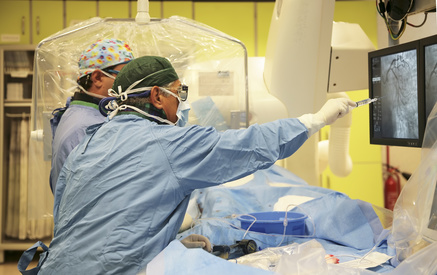Shear stress has been incorporated to our jargon to identify this turbulent flow in certain places of the arterial tree (curves, bifurcations, etc.) that make these sectors more prone to plaque buildup.

Seeing we often use the original term, no Spanish translation has been coined; we all refer to this phenomenon as shear stress and that’s it.
Could 3-dimensional quantitative coronary angiography models detect changes in arterial flow and let us know where shear stress is stronger, and therefore, more likely to cause plaque to buildup? Or where plaque has already developed, could shear stress predict the lesions that will more likely progress into complications? This study to be published in JACC Cardiovasc Imaging tells us this is possible.
The study looked into virtual histology (IVUS) and angiographic data from 28 lipid-rich lesions that caused major adverse cardiovascular events or required revascularization at 5-year follow-up vs other 119 lipid-rich plaques that remained stable during the same period (control group). These plaques showed no obstructive lesions at baseline.
Read also: Differences in Plaque Progression Depending on its Characteristics.
The segments studied by IVUS were reconstructed with a program based on the quantitative angiography that transforms it into 3-dimensional imaging.
Once the geometries were obtained, blood flow simulation was performed, and the pressure gradient across the plaques was estimated. What the software finally offers is the shear stress mean value in 3-mm artery segments.
Lesions leading to major adverse cardiovascular events resulted longer, of smaller minimal luminal area, increased plaque burden, were exposed to higher shear stress and had higher pressure gradient.
Read also: Subintimal Re-Entry in CTO Improves Outcomes.
Multivariable analyzis showed plaque volume (HR: 1.08; p=0.004) and shear stress in the 3 mm segment (HR: 1.11; p=0.001) were independent predictors of major events.
Lesions exposed to greater shear stress and with high anatomical risk (minimal luminal area <4 mm2 and plaque volume >70%) were the most dangerous. Over half (53.8%) of these “dangerous” plaques evolved with events at followup.
Only 20% of high-risk plaque, but with low shear stress, evolved with events and the most benign combination was, of course, low shear stress and low risk anatomy (7.1% events rate at 5 years; p<0.0001).
Conclusion
Shear stress using 3D quantitative coronary angiography shows valuable information that combines with anatomical variables to better identify those lesions more prone to progress into events.
Título original: Shear Stress Estimated by Quantitative Coronary Angiography Predicts Plaques Prone to Progress and Cause Events.
Referencia: Christos V. Bourantas et al. JACC Cardiovasc Imaging. 2020, online before print. doi: 10.1016/j.jcmg.2020.02.028.
Get the latest scientific articles on interventional cardiologySubscribe to our weekly newsletter
We are interested in your opinion. Please, leave your comments, thoughts, questions, etc., below. They will be most welcome.





